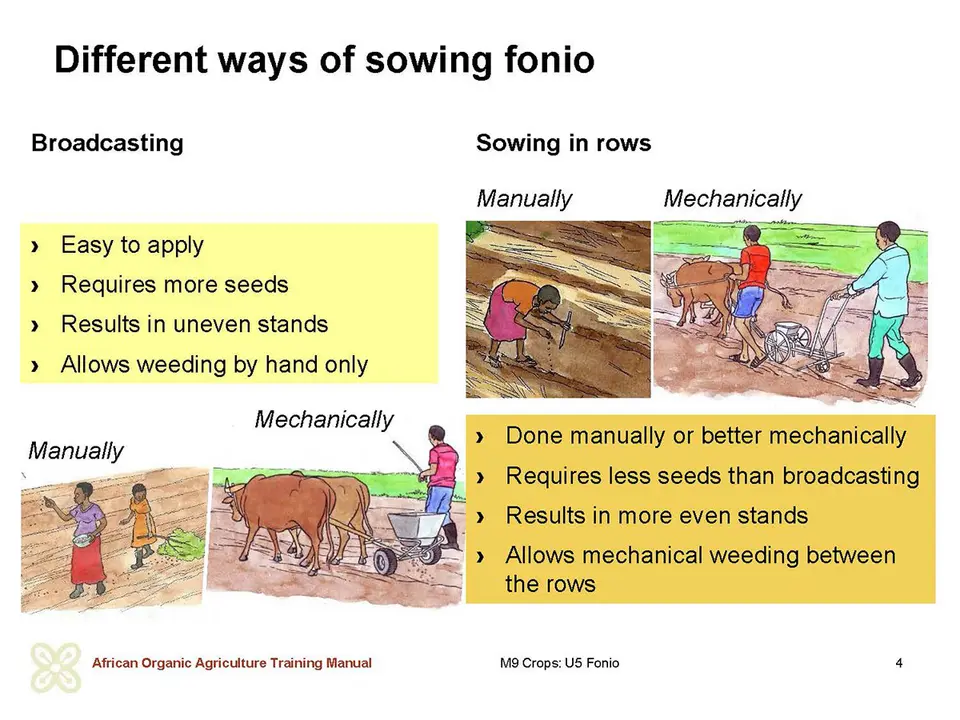Proper field establishment
Fonio is grown in traditional rain-fed farming systems in areas with annual rainfall of 700 to 1000 mm. In areas with very low rainfall the crop is grown in valleys that benefit from run-off water. From sea level up to an altitude of 1500 metres white fonio is cultivated, while in upland regions mostly black fonio is grown. Although considered to be quite drought resistant, fonio is not as drought resistant as pearl millet. However, the fast-maturing landraces, due to their short growing period, are suited to areas with short and unreliable rains. Fonio grows on various soil conditions including poor, shallow, sandy, degraded or acidic soils, but heavy and saline soils are less suitable.
Fonio is usually sown at the beginning of the rainy season. Instead of preparing the soil the traditional way by burning the fallow vegetation and ploughing, the remaining vegetation may be slashed and left as a mulch on the soil surface to protect it from erosion and drying out. Then reduced soil cultivation may be applied, for example by ripping the soil in rows only. Although not common, such a method may have its advantages. For germination fonio only requires a superficially loosened soil, because of its small seeds. Loose topsoil with a fine tilth provides good conditions for germination.
Sowing is commonly done by broadcasting. For this, the small seeds are best mixed with an equal quantity of sand to best spread the seed. After sowing the seeds are covered with soil by a light hoeing or brushing with tree branches. The seed rates range from 10 to 30 kg per hectare, depending on soil fertility and growing conditions. Seed rates from 50 to 70 kg per hectare result in denser stands and reducing competition from weeds. Broadcasting can result in bunches of fonio plants, which then develop poorly.
Although not common yet in fonio production, sowing in rows provides a number of advantages: it requires less seeds, results in more uniform stands and – when sown at a row distance of 15 to 20 cm – allows mechanical weeding with a hoe or a tine or blade weeder, if the soil is not covered by dry mulch.
Discussion on the most appropriate sowing technique
Ask the farmers, whether any of them have experience sowing fonio in rows. Discuss possible advantages and inconveniences of sowing in rows compared to broadcasting. Which requirements must sowing equipment fulfill?

 tap and then scroll down to the Add to Home Screen command.
tap and then scroll down to the Add to Home Screen command.